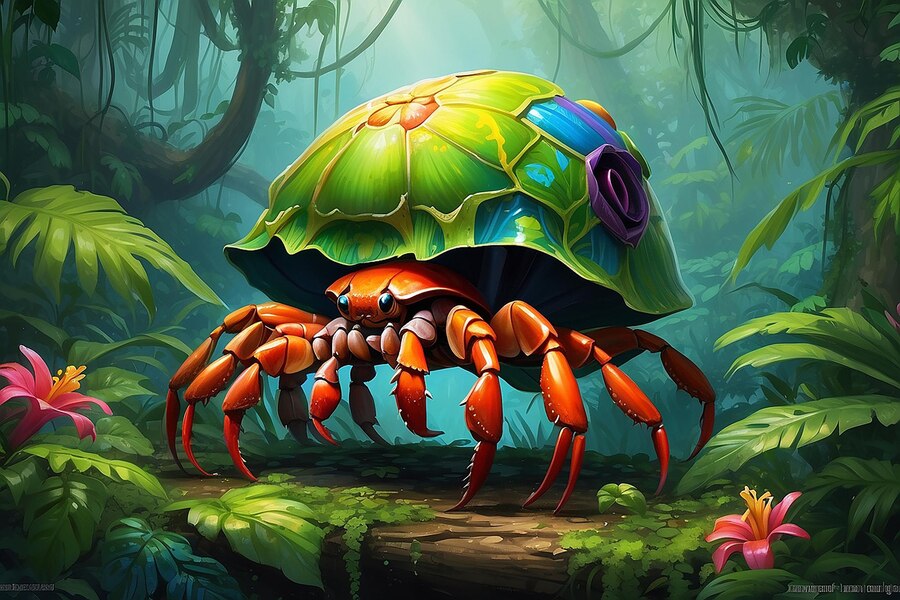Introduction
Fables have long been a part of human culture, offering wisdom through simple yet profound stories. One such tale is that of the scorpion and the turtle, a narrative that delves deep into themes of trust, betrayal, and inherent nature. This article explores the fable, its moral, and its relevance to our lives today.
The Fable of the Scorpion and the Turtle
Setting the Scene
The story begins on the bank of a wide river, where a scorpion finds himself in need of crossing to the other side. Unable to swim, he searches for a means to traverse the water safely.
The Encounter
Soon, the scorpion spots a turtle preparing to enter the river. Seizing the opportunity, the scorpion approaches the turtle with a request.
The Request
“Would you be so kind as to carry me across the river on your back?” asks the scorpion.
The Turtle’s Hesitation
Initial Reluctance
The turtle, wary of the scorpion’s venomous sting, hesitates. “How do I know you won’t sting me while I carry you?” he questions.
The Scorpion’s Argument
The scorpion reassures the turtle, saying, “If I sting you, we will both drown. It would be foolish for me to do so.” Convinced by this logic, the turtle agrees to help the scorpion.
The Journey Begins
Crossing the River
With the scorpion on his back, the turtle starts swimming across the river. The journey begins smoothly, and a sense of trust starts to build between the unlikely companions.
Building Trust
As they move forward, the turtle feels more confident that the scorpion’s argument holds true. They are halfway across the river when the unexpected happens.
The Unexpected Sting
The Betrayal
Suddenly, the scorpion stings the turtle. Shocked and in pain, the turtle feels the venom spreading through his body.
The Consequence
“Why did you sting me?” asks the turtle in disbelief. “Now we will both drown.”
The scorpion, with a sorrowful expression, replies, “I couldn’t help it. It’s in my nature.”
Moral of the Story
Understanding Nature
The fable teaches us that some actions are dictated by inherent nature, which can be difficult to change despite logical arguments or seemingly rational behavior.
Trust and Betrayal
It also highlights the complexities of trust and the potential for betrayal, even when it seems counterproductive.
Interpretations and Lessons
Human Nature and Behavior
The scorpion represents individuals or aspects of human nature that act according to their inherent traits, regardless of the consequences. The turtle, on the other hand, symbolizes those who trust and extend help, sometimes to their detriment.
Applying the Moral in Daily Life
In daily life, this story can remind us to be cautious about whom we trust and to understand that some behaviors are deeply rooted and unlikely to change.
Comparisons to Other Fables
Similar Stories in Different Cultures
Many cultures have similar stories with animals that embody human traits, teaching similar lessons. For instance, Aesop’s fables often feature animals with distinct characteristics that reflect human virtues and vices.
Common Themes
Themes of trust, betrayal, and inherent nature are common across many fables, underscoring universal truths about human behavior.
Why Do We Tell This Story?
Educational Value
Fables like the scorpion and the turtle serve an educational purpose, teaching children and adults alike about important moral lessons in an engaging way.
Reflection on Human Relationships
These stories prompt reflection on our relationships and interactions, encouraging us to think critically about trust and the nature of those around us.
Conclusion
The tale of the scorpion and the turtle is a timeless story that imparts valuable lessons about human nature, trust, and betrayal. By understanding and reflecting on these themes, we can navigate our relationships and interactions more wisely.
FAQs
What is the main lesson of the Scorpion and the Turtle?
- The main lesson is that some behaviors are driven by inherent nature and are difficult to change, even when it is not in one’s best interest.
How does this fable apply to modern life?
- The fable applies to modern life by highlighting the importance of being cautious about whom we trust and recognizing that some people’s actions are guided by their unchangeable nature.
Are there other versions of this story?
- Yes, similar stories exist in various cultures, often with different animals but conveying the same moral lesson.
What is the significance of the characters chosen for the fable?
- The scorpion represents dangerous, unchangeable traits, while the turtle symbolizes innocence and the willingness to trust, highlighting the dynamic between these opposing characteristics.
How can we use this story to teach children about trust and nature?
- This story can be used to teach children about the importance of being cautious with trust and understanding that some behaviors are innate and difficult to change, fostering a sense of critical thinking and awareness in their interactions.










